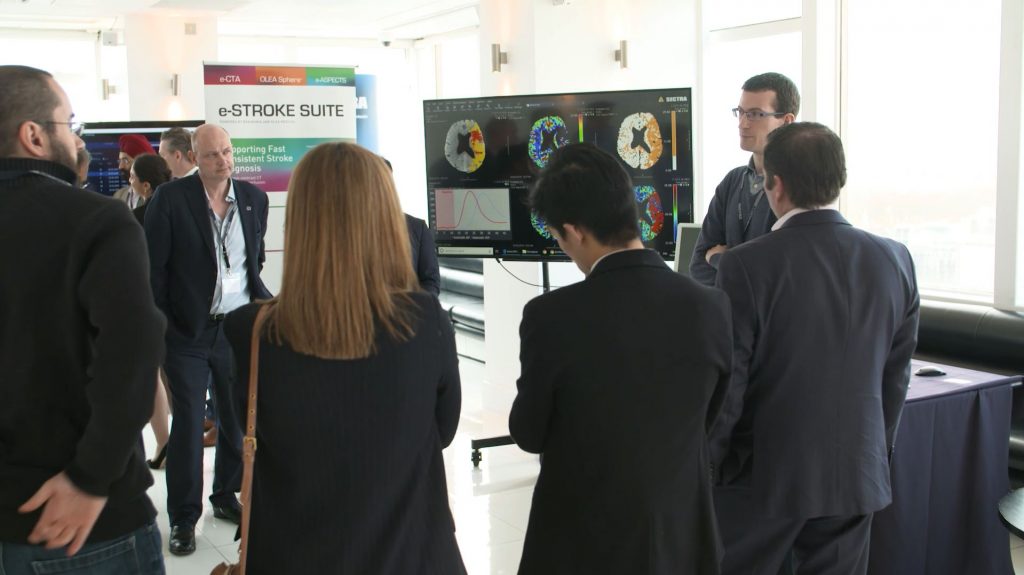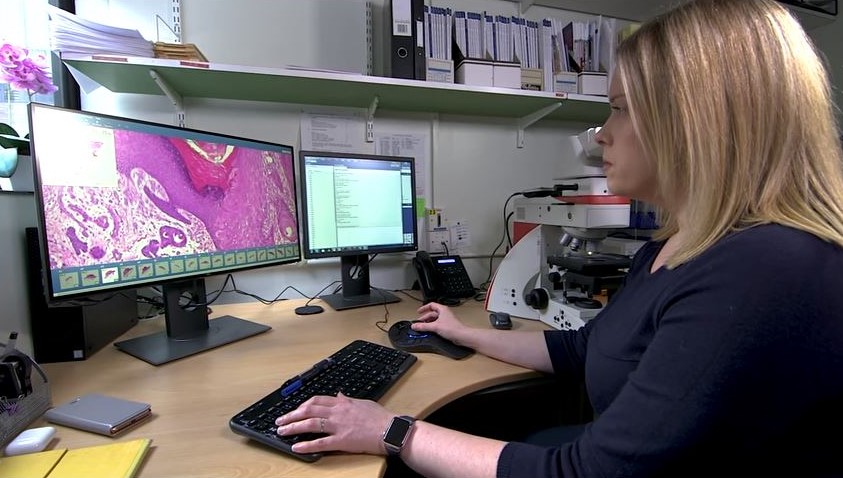Regionalised health and care will become commonplace with the implementation of sustainability and transformation partnerships (STPs), whilst concurrently, global digital exemplars (GDEs) will enhance NHS digital maturity. In parallel, we have an unprecedented chance to break down silos for diagnostic disciplines, whilst retaining specialist departmental services.
The role of the hospital picture archiving and communication system (PACS), electronic patient record (EPR) and vendor neutral archive (VNA) is changing to support enterprise wide digitisation ambitions and regionalised ways of working:
- A modern PACS must serve more than radiology. Every hospital diagnostic discipline, from radiology to pathology, dermatology, breast, and more, must be enabled to work more closely with each other and with the rest of medicine by fully harnessing information and imaging captured.
- This does not require the erosion of diagnostic discipline identities.
- Integrating diagnostics is an opportunity to share information to better inform reports.
- Multi-directional information flows between ologies, the rest of medicine and linking back to the EPR can improve diagnoses and alert frontline clinical staff to important information.
- The role of the VNA is moving from a necessary storage archive for radiology, to an intelligence goldmine harnessing the data captured by all ologies for decisions at the point of care, richer reporting and machine learning.
- We can now start to create regional diagnostic hubs, that allow digital imaging to flow where it is needed to make the best use of scarce resources, and to follow the individual, so that timely and better decisions can be made for and with patients. Economies of scale can be exploited to maximum gain – enabling better use of specialist resources and skills.
Read more:
Regional healthcare initiatives in the UK: an opportunity for silo-busting and integrated diagnostics
Breaking down silos: delivering true clinical value from a VNA
Redefining technologies in the quest for patient centricity
Two NHS trusts take ‘giant leap’ in connecting diagnostics across hospitals
Breaking information out of silos has implications beyond informing immediate clinical decisions. There are significant implications for artificial intelligence and machine learning.
In radiology alone, millions of X-rays, CT scans, MRIs and a plethora of other diagnostic imaging have been stored digitally for many years, for the most part sitting in departmental archives undisturbed.
Teaching computers to analyse this imaging, could unleash one of the NHS’ biggest un-tapped resources.
- Rich datasets from all diagnostic departments may very soon be accessible from single points of storage like the VNA. This will become a central component of the NHS enterprise, where data can be re-processed and re-analysed continuously to add clinical decision support for precision and personalised medicine based on population comparisons.
- Machines can be more than a powerful decision support system, they could be programmed to proactively suggest patients suspected of having conditions.
- Artificial intelligence technologies can search through imaging in advance of reports being carried out and flag to healthcare professionals patients who appear to be at risk.
Read more:
Artificial intelligence and the indispensable human in diagnostics
Could imaging be a goldmine for healthcare providers’ artificial intelligence?
What intelligence can hospitals gain from diagnostics?
Introducing AI and ML applications in healthcare – from the algorithm development sandbox to the clinical wilderness
We have an opportunity to think big. Enterprise and regionally integrated diagnostics are fast becoming essential. But the NHS could even think about national economies of scale when it comes to diagnostic technology infrastructure.
Cloud technology, and private cloud in particular, has the potential to speed up the time in which all parts of the health service benefit from the latest innovation and software updates, to enable the collaboration demanded by evolving models of care, and to use the ‘N’ in the NHS to greatest effect, whilst still allowing specialist functionality demanded by the frontline.
- There are opportunities for national economies of scale without reverting to the National Programme for IT.
- Northern Ireland has already exploited cloud to deliver one of the biggest PACS deployments in the world, covering the entirety of Northern Ireland, so that healthcare professionals across different disciplines can access a patient’s radiology record from almost any location.
- Large scale cloud deployment has already been seen in England where more than 400 NHS sites are using the Sectra Image Exchange Portal.
- NHS organisations can no longer afford to work from IT systems that are years out of date. We can do more than leapfrog digital maturity; and we can enhance cyber resilience.
- Security, often cited as a point of concern in cloud adoption, has the potential to be significantly enhanced, particularly at a time when skilled IT resources are in high competition.
Read more:
A UK-wide cloud for diagnostics could leapfrog digital maturity
Could the NHS be the most powerful IT customer in the world?




